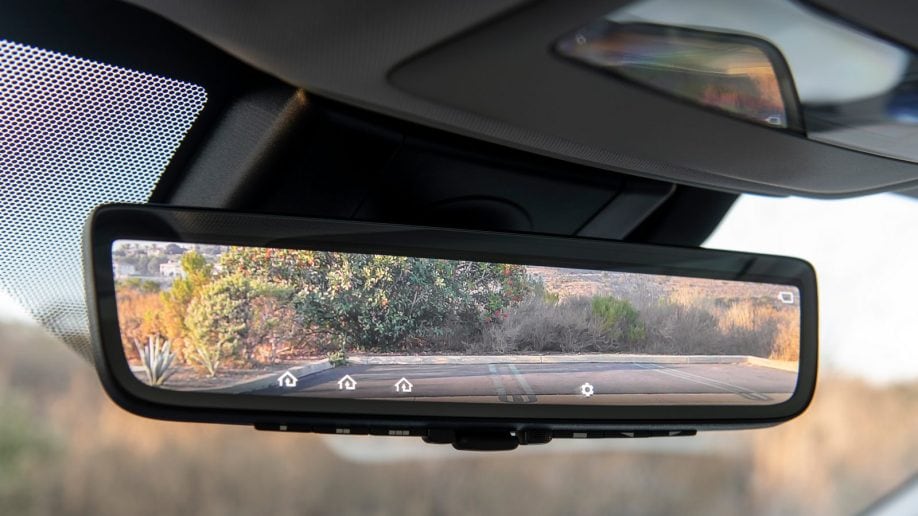A rearview mirror is an adjustable reflective device to give the driver a view of the road, vehicles, and objects behind the car.
According to the U.S. Code of Federal Regulations Title 49, Subtitle B, Chapter V, Part 571, Subpart B, Entry 571.111, each passenger car must have an inside rearview mirror, a driver’s side outside rearview mirror, and a passenger’s side outside rearview mirror. The regulations specify each mirror’s size and reflective properties, with an important distinction between types. The inside rearview mirror, which is mounted securely at the center of the dash or top of the windshield, is a unit magnification mirror, “a plane or flat mirror with a reflective surface through which the angular height and width of the image of an object is equal to the angular height and width of the object when viewed directly at the same distance.” The outside mirrors, mounted on the front doors or at the bases of the A-pillars, are convex mirrors “having a curved reflective surface whose shape is the same as that of the exterior surface of a section of a sphere.” Outside mirrors must display the legend “Objects in the mirror are closer than they appear.”
Recent technology developments have allowed manufacturers to add rear-facing cameras that use the rearview mirror’s surface as a monitor, providing a virtual reflection instead of an actual one. The driver gets a button to turn off the system, allowing the real reflection to show through when the camera is off. Though concept and custom cars have featured this technology, cameras have not yet replaced outside rearview mirrors.








